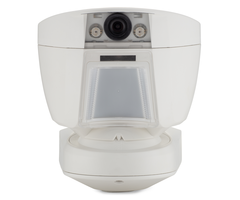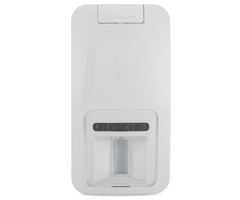PowerG PIR Motion Sensors




Passive infrared (PIR) motion detection sensors are some of the most common sensors used with security systems. These devices respond to the change in infrared (IR) energy that can be detected when a person, animal or object comes within the detection area. Every person, animal and object gives off a small amount of infrared energy, and this energy can be detected by motion sensors. These sensors are useful for covering entire areas within a home or business and making sure that no activity occurs while the user is away.
A common application of motion sensors is to install them in rooms with many windows. Rather than mounting door and window contacts or shock sensors on every window, you can just mount one motion sensor in the room. If anyone tries to enter the room through a window, the motion sensor will detect the movement and alert the system. It won't matter which window they enter through. As long as the window is within the sensor's field of view, their movement will be detected.
PowerG Motion Sensors are wireless motion detectors that communicate with security systems at a frequency of 915 MHz. PowerG Sensors are known for being some of the most robust and most powerful devices in the entire security industry. These devices can communicate with a system from up to 2 km away with a direct line of sight. You can also add a PowerG Wireless Repeater to increase this distance to 4 km in open air. Keep in mind that thick walls and large metal objects may reduce this maximum advertised range.
Another benefit of PowerG Motion Sensors is that they utilize 128-bit AES encryption in all their communications. This makes these sensors virtually impossible to hack or takeover wirelessly. Some intruders may try to use advanced technology to try to takeover unencrypted sensors and defeat a security system. Many people preferred to use hardwired sensors to prevent this from happening. But with encrypted sensors, this is largely a thing of the past.
When using PIR motion sensors, mounting location is extremely important. The motion must be installed in a location where it can reliably detect a human intruder, but not cause any false system alarms. Most interior motion sensors are programmed so that an immediate alarm will occur if motion is detected while the system is Armed Away. Most Interior motion sensors are programmed to ignore motion that occurs while the system is Armed Stay. This allows building occupants to move around freely without worrying about setting off an alarm.
Motion sensors should not be mounted towards air vents, ducts, ceiling fans, direct sunlight, furniture that pets can climb on top of, or stairwells. Mounting a motion sensor towards any of these structures could result in false system alarms. Remember to place your system on test mode and test your motion sensors after installation.


